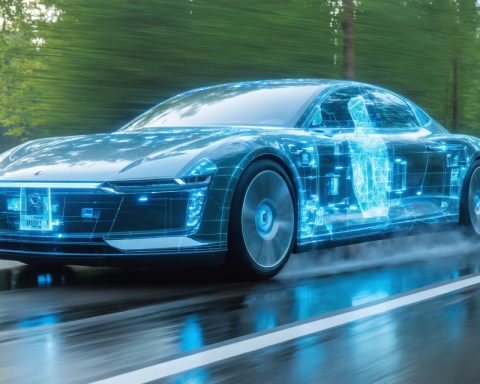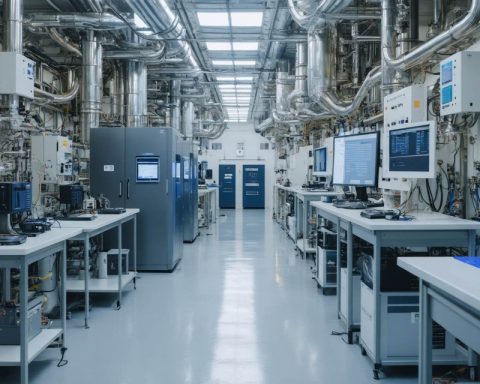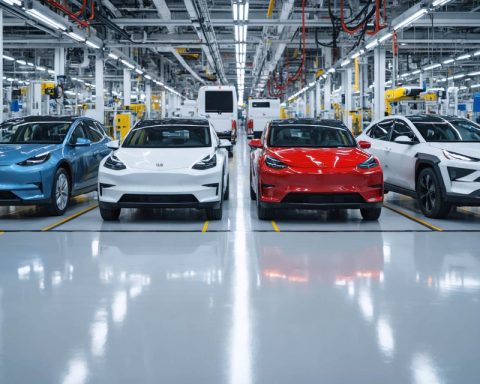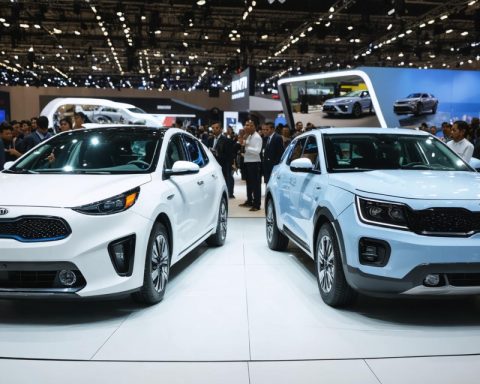- The automotive industry is rapidly transitioning from internal combustion engines to electric vehicles (EVs), revolutionizing transportation.
- Electric vehicles are becoming mainstream, with major manufacturers expanding their EV lineups and leveraging renewable energy sources.
- Advancements in battery technology, such as improved lithium-ion and emerging solid-state batteries, enable longer ranges and lower costs, addressing ‘range anxiety’.
- Automakers are embracing sustainable manufacturing practices to reduce environmental impact across their supply chains.
- Countries are setting ambitious targets for phasing out fossil fuel vehicles, creating a need for robust charging infrastructure and renewable energy integration.
- Challenges persist, including the environmental impact of mining for battery materials and the need for global infrastructure development.
- The shift toward electrification signifies a transformative era in transportation, promising widespread adoption of EVs and sustainable driving.
The hum of the internal combustion engine might gradually fade into history as the automotive industry accelerates towards an electrifying future. Electric vehicles (EVs) are no longer mere prototypes or the preserve of science fiction. They are here, gaining speed, and revolutionizing how we imagine transportation.
Picture a city where cars glide silently through the streets, their sleek designs powered not by fossil fuels, but by batteries charged with renewable energy. This is no utopian vision; it’s the trajectory the automotive world is on. With industry giants like Tesla, Ford, and Volkswagen boosting their EV portfolios, the landscape of car manufacturing is undergoing a seismic shift.
Rapid Technological Advancements
Battery technology lies at the heart of the EV transformation. Innovations in lithium-ion battery efficiency, energy density, and production costs have spearheaded this vehicular evolution. Today’s electric cars can travel farther on a single charge than ever before, with some models boasting ranges over 300 miles. Fast-charging networks continue to expand globally, alleviating consumer ‘range anxiety’ and making electric ownership more practical and appealing.
As companies pour billions into research and development, breakthroughs in solid-state batteries promise to further enhance performance and safety. These advancements may ultimately reduce costs, making electric vehicles accessible to a wider audience.
Sustainable Manufacturing
The shift to electric is about more than just the powertrain. Automakers are revisiting their entire supply chains, focusing on sustainability. From using recycled materials in car interiors to ensuring eco-friendly production practices, this green wave is all-encompassing. Brands that adopt such practices not only bolster their reputation but also appeal to environmentally-conscious consumers demanding accountability and transparency in corporate processes.
Global Impacts and Challenges
The ramifications of electrification extend beyond the showrooms. Countries worldwide are signaling the end of gasoline and diesel car sales, with nations like Norway targeting a 2025 deadline for all new cars to be zero-emission. With policymakers drafting incentives for both manufacturers and consumers, the automotive industry stands at a precipice of monumental change.
Yet, challenges remain. The transition calls for robust infrastructure, including a widespread network of charging stations and renewable energy sources. Moreover, the environmental impact of mining for rare minerals, such as lithium and cobalt, essential for batteries, is under scrutiny. The journey to a greener future necessitates balancing demand with sustainable practices.
The Takeaway
The electrification of the automotive industry is more than just a trend; it’s a revolution in motion. As electric vehicles become more affordable and infrastructure improves, they are poised to dominate roadways worldwide. For car enthusiasts and environmental advocates alike, the industry’s commitment to innovation and sustainability marks a thrilling chapter in the history of transportation.
Whether you are considering an EV for your next purchase or simply watching these developments from the sidelines, one thing is certain: the future of driving is electric, and it’s charging full speed ahead.
The Electric Revolution: Why the Future of Driving is Here and Now
The hum of the internal combustion engine might gradually fade into history as the automotive industry accelerates towards an electrifying future. Electric vehicles (EVs) are no longer mere prototypes or the preserve of science fiction. They are here, gaining speed, and revolutionizing how we imagine transportation.
Picture a city where cars glide silently through the streets, their sleek designs powered not by fossil fuels, but by batteries charged with renewable energy. This is no utopian vision; it’s the trajectory the automotive world is on. With industry giants like Tesla, Ford, and Volkswagen boosting their EV portfolios, the landscape of car manufacturing is undergoing a seismic shift.
Rapid Technological Advancements
Battery technology lies at the heart of the EV transformation. Innovations in lithium-ion battery efficiency, energy density, and production costs have spearheaded this vehicular evolution. Today’s electric cars can travel farther on a single charge than ever before, with some models boasting ranges over 300 miles. Fast-charging networks continue to expand globally, alleviating consumer ‘range anxiety’ and making electric ownership more practical and appealing.
As companies pour billions into research and development, breakthroughs in solid-state batteries promise to further enhance performance and safety. These advancements may ultimately reduce costs, making electric vehicles accessible to a wider audience.
Sustainable Manufacturing
The shift to electric is about more than just the powertrain. Automakers are revisiting their entire supply chains, focusing on sustainability. From using recycled materials in car interiors to ensuring eco-friendly production practices, this green wave is all-encompassing. Brands that adopt such practices not only bolster their reputation but also appeal to environmentally-conscious consumers demanding accountability and transparency in corporate processes.
Global Impacts and Challenges
The ramifications of electrification extend beyond showrooms. Countries worldwide are signaling the end of gasoline and diesel car sales, with nations like Norway targeting a 2025 deadline for all new cars to be zero-emission. With policymakers drafting incentives for both manufacturers and consumers, the automotive industry stands at a precipice of monumental change.
Yet, challenges remain. The transition calls for robust infrastructure, including a widespread network of charging stations and renewable energy sources. Moreover, the environmental impact of mining for rare minerals, such as lithium and cobalt, essential for batteries, is under scrutiny. The journey to a greener future necessitates balancing demand with sustainable practices.
Insights & Predictions
The electric vehicle market is poised for exponential growth. According to a report by BloombergNEF, EVs could account for 58% of new car sales globally by 2040. This prediction is supported by the increasing availability and decreasing costs of EV models, alongside stricter emissions regulations by governments worldwide. Traditional automakers are also increasingly collaborating with tech companies to incorporate advanced features, like autonomous driving and AI, enhancing consumer interest.
Pros & Cons Overview
Pros:
– Reduced greenhouse gas emissions
– Lower operating and maintenance costs
– Quieter driving experience
Cons:
– Limited charging infrastructure in some regions
– Higher upfront costs compared to traditional cars
– Environmental concerns related to battery production
Real-World Use Cases
Fleet operators, like those in logistics and public transportation, are already demonstrating the real-world applicability of EVs. Companies like UPS and Amazon are investing heavily in electric trucks to reduce their carbon footprint and operational costs. Similarly, cities are adopting electric buses to enhance urban mobility without environmental pollution.
Actionable Recommendations
1. For Consumers: Research and consider state incentives or rebates for EV purchases, which can significantly offset costs.
2. For Potential Investors: Keep an eye on developments in battery technology and companies investing in solid-state battery research. These could be pivotal in the EV sector’s future growth.
3. For Urban Planners and Policymakers: Encourage investments in charging infrastructure to support a wider adoption of EVs.
This electric transformation inevitably requires collaboration between industry stakeholders, government bodies, and consumers. For those interested in joining the EV movement or wanting to learn more, visiting Tesla and Ford could be insightful starting points.
With the automotive industry’s commitment to innovation and sustainability, the future of driving is electric, and it’s charging full speed ahead.


















